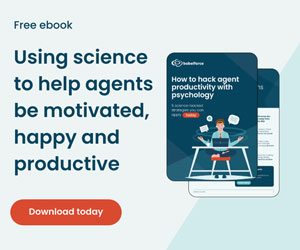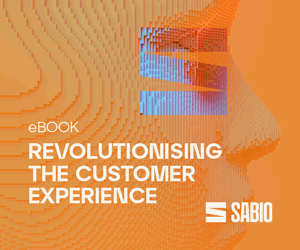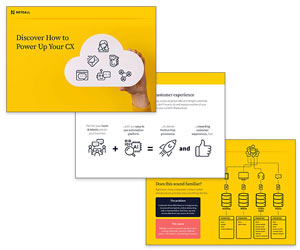Customer Satisfaction is considered to be the most important contact centre metric right now – prioritized by over 85% of contact centres – so what can be done to improve it?
To find out, we asked our expert panel for their quick wins to improve C-SAT scores.
Here’s what they said…
15 Quick Ways to Improve CSAT Scores
1. Always Follow Up to Check Customer Queries Are Fully Resolved
Send post-call surveys or follow up emails to ensure customer queries or issues are fully resolved. A quick check-in strengthens relationships and prevents repeat calls.
Contributed by: Ian Chappell, Director of Consulting, Centrical
2. Avoid Industry Jargon That Might Confuse Customers

Keep communication clear! Avoid industry jargon and acronyms that might confuse your customers. A clear, concise message ensures they understand you and you understand them.
Also focus on First Contact Resolution. Customers don’t want to repeat their issue or be transferred multiple times, so use analytics tools to track and train your team to resolve common issues on the first try, as it saves time and leaves a lasting positive impression.
Contributed by: Jonathan “Kenu” Escobedo, Customer Success Manager, Miarec
3. Uncover the Root Causes Behind Repeated Calls or Delays

Analysing interactions across all channels allows you to uncover the root causes behind repeated calls or delays – whether it’s a process hiccup or an area where agents need extra coaching.
By taking action on these insights, you’ll streamline the experience and leave your customers happier, loyal and satisfied.
Contributed by: Adam Hutchinson, Business Analyst, CallMiner
4. Try the ACAF Model

You don’t get good feedback without a good strategy, so I strongly recommend adopting the ACAF Model:
- Ask – You can ask often, but you have to ask well. Be focused with the topics you’re bringing to customers. Don’t overload them. 100 people answering 1 question tells you more than 1 person answering 100 questions.
- Categorize – Categorizing means ensuring your questions are relevant. For example, the survey you email to your database isn’t the same as the post-call survey you give customers.
- Act – Acting is obviously the most crucial part. Many contact centres lack the ability to do much about broken processes, so I suggest documenting bad processes. You can use that as leverage for investment in systems that enable more direct control.
- Follow up – Consumers don’t think their feedback is worth much – but they’re wrong. Put in the extra effort to let them know their feedback has been received and will be acted on.
Contributed by: Mikkel Rodam, Account Executive, babelforce
5. Demonstrate the Frequency of Issues to Pinpoint the Most Impactful Actions
Use AI Voice of the Customer (VoC) to capture the gold nuggets inside every customer interaction. Then, critically, have AI convert these insights into recommendations ready for you to implement.
AI has no bias and can accurately identify items that your agents may not report or even notice: critical patterns, frustrations and unresolved issues, as well as explicit threats to churn.
Getting data that demonstrates the frequency of various issues will help you pinpoint the most impactful actions that will result in rapid improvement of your CSAT scores. This data will also help you generate any investment required to achieve these improvements.
Contributed by: Raajan Mangat, VP, CX and Operations, Enghouse
6. Implement Short, Quick Training Bursts for Your Agents

Improving C-SAT comes down to doing the things that suit the customer. At the larger end of the scale, that can mean having better tools for staff to work with, a more unified or omnichannel solution, covering the channels a customer wants to communicate on.
At the other end of the scale, it’s about ensuring there’s constant workforce engagement and training – not just on the technical stuff but also soft skills, so implement short, quick training bursts for people.
Ultimately, it boils down to data. If you aren’t getting information in, then you won’t know what needs fixing to improve CSAT.
Contributed by: Chris Angus, VP, 8×8
7. Establish Clear Decision-Making Frameworks for Agents

Train customer service representatives to take ownership of issues from start to finish, equipping them with the authority and tools to resolve problems without escalation.
Establish clear decision-making frameworks that allow agents to make on-the-spot decisions within defined parameters. Implement a comprehensive knowledge base that enables quick access to solutions for common problems.
The impact is immediate: customers appreciate not being transferred between departments or having to explain their issue multiple times. In my experience, improving FCR by just 15% typically sees CSAT scores increase by 20–25%. This approach also reduces operational costs by minimizing repeat contacts.
Contributed by: Agam Kohli, UK Experience Director, Odigo
Editor’s Note – We spotted a great example of this technique in action at the Ocado Customer Hub in Sunderland, UK, where they had created a goodwill matrix for agents to reference – a visual guide mapping out what to give unhappy customers depending on the severity of the issue and the loyalty of the customer.
8. Be Open About Your Processes, Timelines, and Potential Outcomes

Being open about processes, timelines and potential outcomes fosters trust with customers, reducing frustration by managing expectations effectively.
Good process governance ensures that operations run smoothly, minimizing errors and delays. Standardized, well-documented processes not only improve efficiency but also empower agents to consistently deliver high-quality services.
Conversational AI plays a key role in enhancing the customer experience by providing fast, accurate and consistent responses. By handling routine queries, it reduces waiting times and allows agents to focus on more complex issues.
AI-driven tools also support agents in real time, ensuring they have access to the information they need to deliver timely, reliable service.
Contributed by: Lewis Gallagher, Senior Solutions Consultant, Netcall
9. Check Your VoC Programme and CX Strategy Are Pulling in the Same Direction

Your CX strategy should be the foundation of all customer insight and measurement in your organization.
Use the strategy to list the outcomes you want for your customers at the end of each journey or touchpoint, then cross-reference that with your VoC programme – are they both pulling in the same direction?
For instance, if your CX strategy is about easy interactions, is there a question in your VoC programme that will help you measure that across all touchpoints? If your customer promise talks about the expertise of your support teams, have you asked the customers their opinions on that?
Aligning strategy and customer perception will not only help you measure the delivery of your CX goals, it will also help you reshape your operation to be completely CX-focused.
Contributed by: Christine Howard, VoC Operations & Service Manager, Sabio
10. Identify Customer Champions in Each Department

Research shows that engaged employees deliver 89% greater customer satisfaction, so start by identifying and empowering customer champions in each department who can model ideal behaviour and drive the customer-focused mission.
Establish clear guidelines for when employees can make independent decisions to resolve customer issues and celebrate examples of exceptional customer service.
This approach not only improves customer satisfaction but also boosts employee morale, creating a positive feedback loop that benefits both customers and staff.
Contributed by: Ben Booth, CEO, MaxContact
11. Reduce After-Call Work (ACW) to Improve CSAT and Operational Efficiency

For any large organization handling millions of customer interactions – like a telecoms or utilities supplier – reducing after-call work (ACW) is a quick win for improving both customer satisfaction and operational efficiency.
By automating agent notetaking with purpose-built AI, these organizations can significantly streamline workflows, cutting manual notetaking and associated costs while enhancing accuracy.
Automating interaction summaries saves agents time, enabling them to handle more calls or focus on higher-value tasks. It also reduces customer frustration by eliminating the need to call back and repeat their case.
Contributed by: Richard Bassett, VP Digital and Analytics, NICE International
12. Test the Journeys Your Customers Make When They Contact You

Test the journeys your customers make when they contact you and make any adjustments necessary to improve their experience.
Experience it for yourself! Call your own contact centre phone numbers; send an email; visit your website to initiate a webchat; add a comment via social media.
Changes that you identify might include: updates to your welcome greeting and hold announcements, including their cadence; a review of the music you’re playing to callers; routing improvements; website clarifications – and much more.
Delegate the task of regular testing to members of your team, so that someone is scheduled to do this and report in at least quarterly. Walking in your customers’ shoes will help your team work even better with customers day-to-day.
Contributed by: Raajan Mangat, VP, CX and Operations, Enghouse
13. Send Out Automated Notifications BEFORE Customers Need to Ask
Send automated yet personalized notifications about order status, appointment reminders, and service disruptions before customers need to ask.
Implement SMS or email alert systems for service updates, and ensure these communications include estimated resolution times and next steps.
This approach is particularly effective in the UK market, where customers highly value transparency. In my experience, organizations that implement proactive communication strategies typically see a 30% reduction in inbound queries and a corresponding 25% increase in satisfaction scores, as customers feel more informed and respected.
Contributed by: Agam Kohli, UK Experience Director, Odigo
14. Prioritize Fast and Efficient Responses (Long Wait Times Only Lead to Frustration!)
Aim to reduce response times! Speed matters, and long wait times lead to frustration, so prioritize fast and efficient responses across live chat, email, or phone support to ensure customers feel valued.
Contributed by: Jonathan “Kenu” Escobedo, Customer Success Manager, Miarec
15. Connect Customers With the Right Agent Faster

Optimizing staffing, offering self-service, and implementing intelligent call routing all helps connect customers with the right agent faster.
Make customers feel loved too! Reference past interactions, and tailor responses. A simple “I see you called last week” builds trust.
Contributed by: Ian Chappell, Director of Consulting, Centrical
What Have You Tried to Improve Your C-Sat Scores?
Taking steps to boost customer satisfaction is an ongoing exercise in the contact centre, but the good news is that there are lots of things you can try to shift the dial in the right direction – from training agents, improving your processes, and even deploying AI.
So, what’s working in your contact centre right now? Join our LinkedIn community and let us know.
For more great insights and advice from our panel of experts, read these articles next:
- 10 Questions to Ask When Buying Your Next CCaaS Solution
- Why Workforce Management Deserves a Seat at the Strategy Table
- Top Tips for Capacity Planning to Meet Customer Demand
- Contact Centre Predictions for 2025
Author: Megan Jones
Reviewed by: Xander Freeman
Published On: 10th Feb 2025 - Last modified: 4th Apr 2025
Read more about - Technology, 8x8, Agam Kohli, babelforce, Ben Booth, CallMiner, Centrical, Chris Angus, Communication, Customer Satisfaction (CSAT), Editor's Picks, Enghouse Interactive, Jonathan Kenu Escobedo, Lewis Gallagher, MaxContact, MiaRec, Mikkel Rodam, Netcall, NICE, NICE CXone, Odigo, Richard Bassett, Sabio, Top Story, Voice of the Customer









































